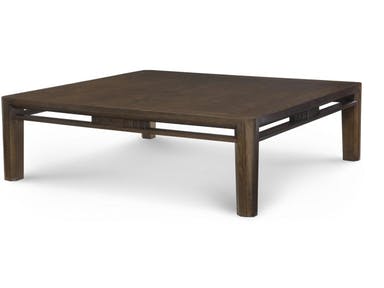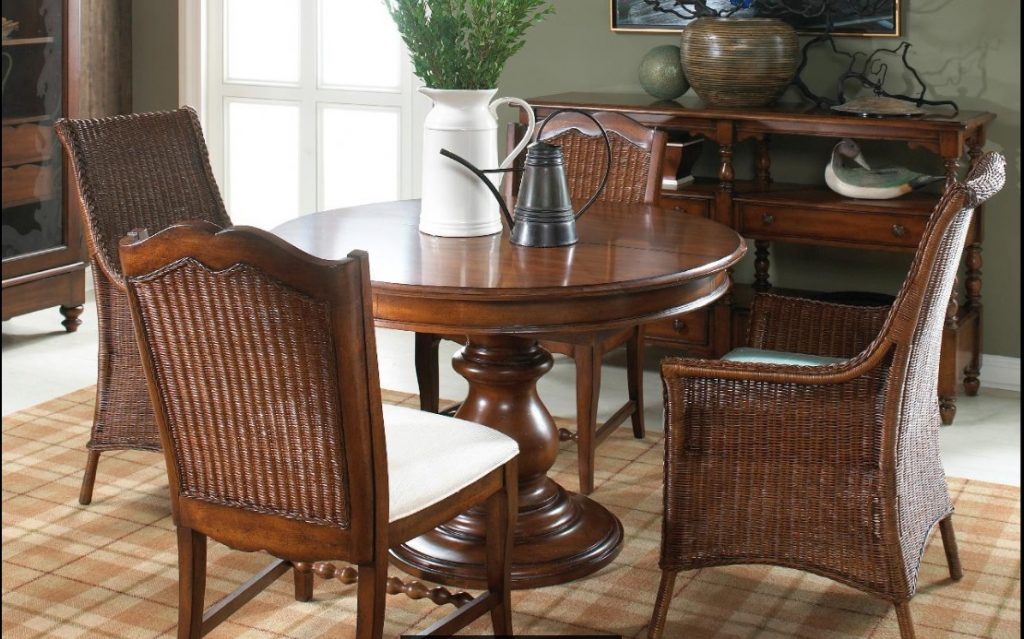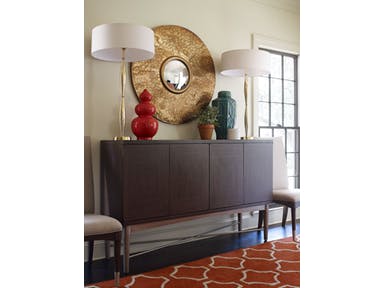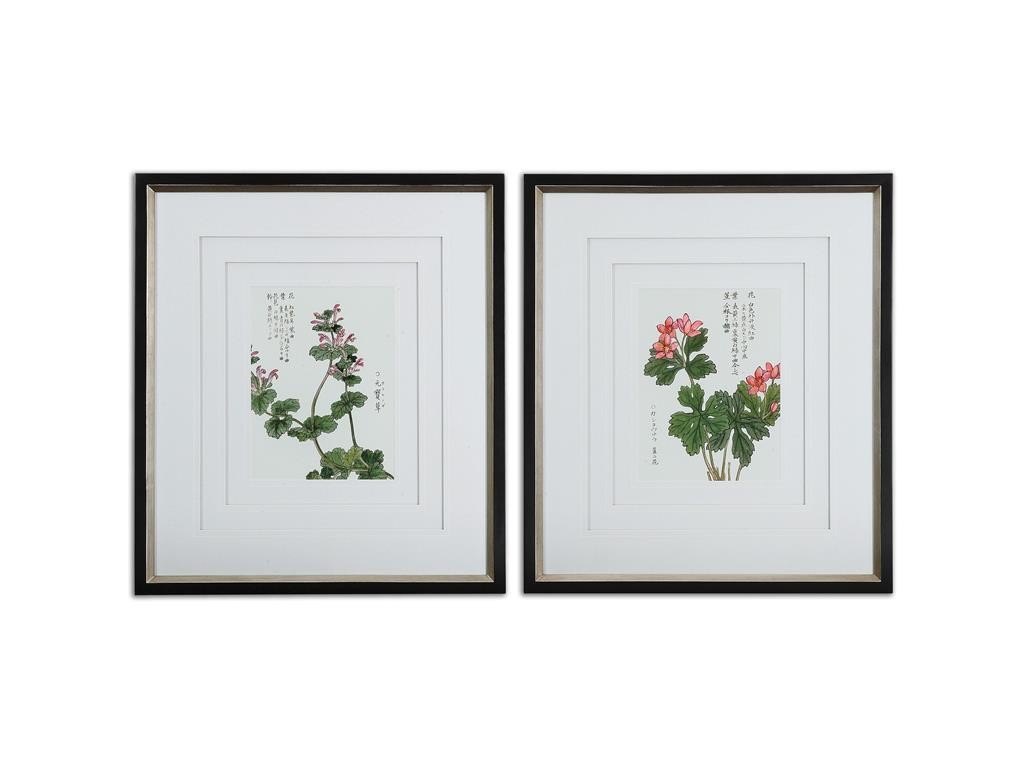Saturday, September 16th, 2017

Century Furniture Living Room Akimi Coffee Table AE9-601
Did it ever occur to you that most Japanese homes are actually small? While this is so, you would not hear Zen enthusiasts ever complaining of not having ample space. And even when these homes are situated close to one another, natural light, safety, and privacy are all still kept intact.
Most urban Japanese homes are not single-family homes. In fact, their apartments are small yet you will still see the beautiful traditional features like step-up entryways and the deeply-relaxing soaking tubs.
Even Westernized Japanese style homes have one Japanese room complete with tatami flooring. This means that the traditional Japanese elements are still widely incorporated by many Western architects. The essential concepts are the following –
Gates
When you go to Japan, one of the things that you would immediately notice are the gated entryways. This is because many residential streets do not have sidewalks. The line of demarcation, therefore, rests on the property’s gate.
The gate is also traditionally roofed especially in Kyoto, Japan. It is also common to find cherry trees in the garden that greets the visitors once they are welcomed into the property.
Walls
Since there are gates, naturally, there are walls. The Japanese always make their properties secure and private so they set up walls right at the property lines. The most common material is the concrete block whether the home is situated in a quaint village or in a city.
There are also bigger homes with stone walls that are topped with wooden fences. There are even those that are topped with actual trees.
Tiled Roofing
Japan is constantly bombarded with rain, hence, their roofs are designed for water drainage. The broad eaves allow the opening of exterior doors without letting in unwanted rain splashes.
Step-Up Entryway
This is that transitional space between the interiors of the home and the outdoors. This is that very spot where the shoes are exchanged for the slippers. Called the genkan, this is also where a shoe cupboard can be placed also some decorative objects like art, flowers or ceramics.
This area may also face the tokonoma or the alcove where artwork or scrolls are prominently displayed. Ikebana or flower arrangements may also be featured there.
North-South Views
Japanese houses are often set up north-south, meaning, the house gets a steady amount of sunlight during the day. The outdoor views are often mountains or lovely water features.
Would you believe that natural light is actually a human right in Japan?
Sliding Doors
The lovely louvered doors are also essential parts of every Japanese home. These also feature slatted windows which are common in live-work homes.
Wood and Straw Everywhere
No Japanese home can be called such without an element of wood in it. Japanese homes often stain their wooden features but they never paint them. It is crucial to feature the wood grain insomuch that they can even feature an entire tree as a roof beam.
Another important material in Japanese interior design is straw matting. On any tatami flooring, a type of grass called igusa is woven. This is used to keep the house cool during the summer months and warm during winter.
Straw matting can be a tad costly but they are known to last for many, many years. Remember how the Japanese never use their dirty shoes indoors? This is the reason why the tatami flooring remains undamaged for many years.
You can also follow this same concept. To add to the Zen atmosphere, you can also bring in standard rectangle mats. Get the ones that have black cloth or brocade edges.
Multi-Purpose Rooms
Traditional Japanese homes also have multiple purposes for every room. The futon or traditional bedding can be folded during the day to reveal a larger room where people can relax, sit or even dine.
Tags: Japanese design elements, Japanese interior design, Japanese interiors, Japanese style, McCreerys, McCreerys Home Furnishings
Posted in Green Living, Interior Design 101, Interior Design Elements, Interior Design Themes | Comments Off on Traditional Japanese Habitat: Where Privacy, Nature, and Harmony Combine
Friday, July 14th, 2017

Summer Home Cottage Wicker Arm Chairs are perfect for any Asian inspired home.
Oriental design or more often called Asian interior design showcases many different cultures – from Japanese, to Vietnam, Chinese to Thai, Korean and Indian. All these interesting Eastern societies are colorful, bold and bright, each with its own distinct look. The most distinct, though, are Chinese and Japanese.
Following Feng Shui
Feng Shui is being practiced in China and many other Asian countries. This is becoming more and more popular in many Western nations, too. These are guidelines in object and structure placement.
Feng Shui focuses on chi or everything that has energy whether positive or negative. These energies are carefully balanced in the observance of Feng Shui.
Choosing Chinese
Homes that get their inspiration from Chinese style show a lot of bold colors from gold, reds to greens. Their living spaces also display ornate furnishings and the most interesting accessories. Furniture in Chinese-inspired homes show a lot of carvings, ornate wood and hand-painted, lacquered surfaces.
The dramatic styling that is seen throughout the Chinese ambiance is also consistent with the accessories. You can see a lot of porcelain jars, huge vases, animal motifs (think of dragons, turtles, cats, horses and frogs).
There are also a lot of complex patterns in different hues or in the usual white and blue. Other stylish stuff include plaques, wall murals and folding paper screens. All these depict legends and historical characters. In essence, you’re not going Chinese if you don’t like striking and vibrant hues.
You should also love red since this is a prominent hue in Chinese design. To the Chinese, this color spells good luck. Accents can be yellow or green which can be used on paper lanterns.
Chinoiserie is also abundant. This is the art form where furnishings are patterned after Chinese décor. It first became popular back in the 1800s in Europe. One can also observe the influence of the Chinese in terms of architecture in many garden pagodas and pavilions.

Rachael Ray Home by Legacy Classic Furniture Dining Room Credenza 6020-151 is the home for the Asian elements in this living room.
Just Japanese
Prepare to feel a different level of calmness when you choose Japanese-inspired interior design. Think of Zen and all the natural elements that would entail this level of serenity.
Japanese indoors include a lot of water fountains, floor covering and tatami mats. Tatami is a straw mat that has cloth edges.
To complete the Japanese look of your home, use natural elements like stone, bamboo, flowers and greeneries. Use decorative pottery as well as embellished textiles.
Furnishings often have clean lines. Most of the stuff are near the floor although everything still appears to be clean.
Natural fibers such as silk are also a must. Remember that the beautiful kimono is made from this wonderful fabric. The translucent shoji screens are also one of the most popular pieces to own as are fusuma (another kind of screen).
Cherry blossoms as wall art can be painted straight on a wall (which serves as your blank canvas) or hung as an artwork.
Asian Principles in Styling
Now that you know the prime style sources for Asian interior design, here are additional principles in Asian styling – asymmetry, altars, natural elements, simplicity, circles and clean motifs.
Asymmetry means having something that demands attention be framed with something that does not seek attention. An example is when you have a fireplace (a major architectural element) which needs to be decorated by a non-competing artwork placed on the mantel.
Both Chinese and Japanese designs pay a huge respect for the altar. This is where they worship, hence, having it in your home means paying the same level of respect and reverence in that area.
Achieving zero clutter in Asian interior design is also a necessity. Have you ever seen a chaotic Japanese home? No? Well that’s because simplicity and cleanliness are also principles of Asian interior design.
Tags: Asian interior design, Asian interiors, Asian style, Chinese interior design, Japanese interior design, McCreerys, McCreerys Home Furnishings
Posted in Interior Design 101, Interior Design Elements, Interior Design Themes | Comments Off on East Meets West: Asian Designs in an American Home
Tuesday, February 23rd, 2016
Picture this – a pair of Buddha greets you when you come home from work. Known as the welcoming Buddha, statues such as these are being collected all over the world. Build around these decorative elements by mixing and matching different Asian vibes throughout the rest of your urban home.
We may live in the West but it is common to find both Chinese and Japanese decor in many homes. As opposed to overstuffed rooms, Asian interiors showcase clean lines and a simplified look. Asian interior design has been around for many centuries but the increased use of this style in many Western homes may be attributed to western people travelling to the east. This global influence in design brings about a different level of visual impression upon the beholder.
Asian Interior Design Is All About Balance
Traditional Asian interiors focus on the philosophy of balance. Elements of nature are effectively balanced with deep, rich tones, all working in harmony to give you that positive flow and a feeling of calm.
While there are many Asian nations which have their own distinct design elements, there are general features that can be categorized as Asian. The shiny beauty of black and red lacquer is obviously Asian. This is achieved through layering of paints till a glossy finish is seen.
Bamboo furniture is also quite popular whether it is the real wood or another type that is carved to look like the real stuff. The Chinese are also known for their love for silk and flowers so go ahead and use floral patterns such as cherry blossoms in your decorative elements.
Add more decorative accessories like hand-painted silk screen or a lacquered jewelry box.
You wouldn’t want to go wrong with the Asian interior design. Without the needed balance, it can look forced and would not highlight an ethnic look.
Begin your Asian design by investing in a few pieces of furniture, garden accents, wall decor, and other accessories. Owning two or three items can already elevate the Eastern vibe inside your home. Remember that you need to be restrained as you design your home with Asian elements. Asian decor is easily recognizable so there is no need to overdo it. Your goal is not to set up an Asian museum right inside your home but a place where the Asian elements are woven carefully to the rest of the existing decor.
Alter the overall ambiance by hanging a simple Chinese scroll on the wall. Add some bold red pillows on your sofa, set up an Oriental rug, and connect the rest of the patterns and texture to your concocted design.
If you have a modern minimalist home, then you can resort to the Japanese interior design instead of the usual Chinese look.
Asian Interior Design Means Zen
There are many words to describe the Japanese version of an Asian interior. The words peaceful, calm and serene all come to mind. Common characteristics in Japanese interior design include –
Asymmetry. Asymmetry and balance can never be separated. Achieve this element in your home by installing a vessel sink, pendant light and mirrors. Add an interesting flower arrangement to complete the look.
Nature-inspired. Expect to find flower arrangements, art scrolls made with wicker, falling water, and decorative pebbles. Blond wood planks are also quite common.
Clean Lines. Modern Asian bath features streamlining, block cabinets, and a generally uncluttered appearance. The circle is also a common motif as it represents the flag of Japan. Enso, meaning circle in Japanese is associated with enlightenment and Zen.
Since clean lines are encouraged, minimum furnishings is required. It’s right for a single light to illuminate the bathroom, for instance. Simplicity is key to setting up Asian interior design using the Japanese theme.

What is Asian interior design without a little art? This photo features the Accessories Uttermost Asian Flowers Framed Art Set2 41513
Tags: Asian interior design, Asian interiors, Chinese interior design, ethnic interior design, ethnic interiors, ethnic style, Japanese interior design, McCreerys, McCreerys Home Furnishings, traditional, traditional interior design, traditional interiors, traditional style, traditional theme, Zen, Zen design, Zen habitat, Zen interiors, Zen style, Zen-inspired home
Posted in Interior Design 101, Interior Design Themes | No Comments »
© McCreery's Home Furnishings | All Rights Reserved | Privacy Policy